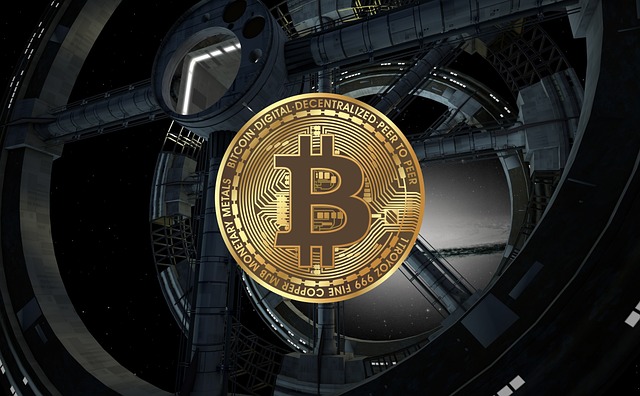How to Choose the Best Crypto Exchange Application: An In-Depth Guide
Author: Jameson Richman Expert
Published On: 2025-07-24
Prepared by Jameson Richman and our team of experts with over a decade of experience in cryptocurrency and digital asset analysis. Learn more about us.
Selecting the right crypto exchange application is a pivotal decision that can significantly influence your trading success, security, and overall experience in the cryptocurrency market. Given the rapid evolution of blockchain technology, regulatory landscapes, and market volatility, an informed choice requires comprehensive analysis. Whether you're a beginner exploring your first trades or a seasoned investor managing complex portfolios, understanding the core features, security measures, and operational nuances of an exchange is essential. This guide provides an exhaustive examination of key criteria, backed by practical insights, industry standards, and real-world experiences, to help you identify the platform best suited to your needs and ambitions.
My initial encounters with crypto exchanges were filled with excitement but also costly lessons—often choosing platforms based solely on superficial features like low fees or aggressive marketing tactics. Over time, I recognized that overlooking critical factors such as security protocols, regulatory compliance, and user support can lead to significant risks. Through rigorous testing, detailed research, and ongoing usage, I’ve distilled a comprehensive set of criteria that distinguish reputable exchanges from unreliable ones. This in-depth approach aims to empower you to make strategic, safe, and profitable decisions in this fast-moving environment.

Core Features of a High-Quality Crypto Exchange Application
A dependable and feature-rich exchange platform should excel across multiple dimensions. Here’s a detailed analysis of the most crucial features:
- Security Infrastructure and Protocols: The safety of your assets depends on the implementation of robust security measures. Leading exchanges employ industry-standard security protocols such as two-factor authentication (2FA), biometric verification, end-to-end encryption, and multi-signature wallets. Many also utilize cold storage solutions—storing the majority of user funds offline—to drastically reduce hacking risks. For instance, Coinbase leverages cold wallets and conducts regular third-party security audits, ensuring adherence to best practices. Some platforms, like Binance, have established insurance funds such as SAFU (Secure Asset Fund for Users), which provide additional financial protection against potential breaches. Furthermore, advanced security features like anti-phishing codes, withdrawal whitelists, and hardware security modules (HSMs) bolster user asset protection.
- User Interface (UI) and User Experience (UX): An intuitive, user-friendly interface minimizes errors and enhances trading efficiency. Responsive design, customizable dashboards, and clear navigation are vital, especially during high-volatility periods. Platforms like Kraken, Binance, and Bybit prioritize sleek UI/UX, enabling both beginners and advanced traders to execute complex strategies effortlessly. Well-designed interfaces reduce cognitive overload and facilitate quick decision-making, which is crucial in a rapidly fluctuating market environment. Additionally, comprehensive charting tools, order types, and real-time data feeds contribute to a seamless trading experience.
- Cryptocurrency Selection and Market Diversity: The range of supported coins significantly impacts your diversification and trading opportunities. Top exchanges such as Binance, KuCoin, and Gate.io support hundreds of cryptocurrencies, from major coins (BTC, ETH) to emerging DeFi tokens, NFTs, and altcoins. This extensive selection allows traders to explore various market segments, capitalize on new projects, and diversify risk effectively. Moreover, some platforms provide access to token staking, liquidity pools, and NFT marketplaces, expanding the scope of investment strategies.
- Fee Structures and Transaction Costs: Fees directly influence profitability. Examine trading fees—maker and taker spreads, deposit, and withdrawal charges—across platforms. Binance, for example, offers tiered fee discounts for high-volume traders and BNB token holders, with fees as low as 0.02% per trade. Hidden costs like inactivity fees, deposit fees, or withdrawal limits should also be scrutinized. Transparent fee disclosures and clear policies are hallmarks of reputable exchanges, preventing unexpected expenses. Some platforms provide detailed fee calculators and breakdowns to aid decision-making.
- Market Liquidity and Trading Volume: High liquidity ensures rapid order execution at expected prices, minimizing slippage—especially important for large trades or during market turbulence. Leading platforms such as Coinbase Pro, Binance, and Kraken maintain substantial trading volumes across major pairs like BTC/USD, ETH/USDT, and others, facilitating fair and efficient trading experiences. Higher liquidity levels also reduce the risk of price manipulation and improve market stability. The presence of market makers and integration with global liquidity pools enhances trading depth and order book reliability.
- Customer Support and Dispute Resolution: Efficient support channels mitigate operational disruptions. Reliable exchanges offer multi-channel support—live chat, email, phone support—and extensive FAQ sections. The quality and responsiveness of customer support often reflect the platform’s professionalism. For example, Bybit’s 24/7 support team provides prompt assistance, which can be critical during sudden market moves or security incidents. User reviews and independent audits often highlight support responsiveness as a key factor in platform trustworthiness.
- Regulatory Compliance and Licensing: Operating under recognized regulatory licenses adds a significant layer of trustworthiness. Verify if the platform holds licenses from regulatory authorities such as the FCA (UK), ASIC (Australia), FinCEN (USA), or others relevant to your jurisdiction. Compliance with AML (Anti-Money Laundering), KYC (Know Your Customer), and data protection standards reduces the risk of shutdowns, legal issues, and fraud, ensuring a safer trading environment. Reputable exchanges also publish transparency reports and participate in third-party audits.
- Additional Advanced Features: For experienced traders, features like margin trading, futures contracts, staking, lending, and API integrations provide expanded strategic options. These tools enable automation, hedging, and leverage-based strategies. Platforms like BitMEX, FTX, and Deribit specialize in derivatives trading, offering sophisticated products that cater to high-level trading needs. Moreover, some platforms provide social trading, copy trading, and comprehensive analytics dashboards to enhance decision-making.
My Personal Experience: Navigating the Crypto Exchange Landscape
My journey started with Binance, where I registered using this referral link: https://accounts.binance.info/en/register?ref=12093552. The platform’s extensive coin selection, liquidity, and competitive fee structure initially impressed me, but I encountered limitations such as withdrawal caps and complex fee schedules that required careful attention. Customer support was sometimes slow, underscoring the importance of reliability over promotional features.
Next, I explored MEXC via: https://www.mexc.co/invite/customer-register?inviteCode=mexc-1bE4c. Although it offered a vast array of tokens, its cluttered interface impacted my trading efficiency, illustrating how UI design can influence operational effectiveness.
I then moved to Bitget, registered through: https://www.bitget.com/referral/register?clacCode=WSVEGD6H&from=%2Fevents%2Freferral-all-program&source=events&utmSource=PremierInviter. Its focus on security, competitive fees, and responsive customer support reinforced my confidence, especially during periods of high volatility.
Finally, I used Bybit via: https://www.bybit.com/invite?ref=Q8QKORN. The platform’s advanced trading tools, margin options, and educational resources have been invaluable in developing sophisticated trading strategies and understanding complex market dynamics.
Practical Strategies for Selecting Your Ideal Crypto Exchange
Based on my extensive hands-on experience, here are detailed, actionable tips to guide your selection process:
- Deepen Your Research: Leverage trusted review aggregators like CryptoCompare, CoinGecko, and community feedback on Reddit (r/CryptoCurrency). Pay close attention to user reports on security breaches, interface usability, and support responsiveness to gauge real-world performance.
- Verify Licensing and Security Certifications: Confirm the exchange’s regulatory licenses and review security audits conducted by reputable firms such as NCC Group, Hacken, or CertiK. Platforms with verified certifications typically adhere to higher security standards and transparency.
- Practice with Demo Accounts: Many exchanges offer simulated trading environments. Use these to familiarize yourself with the platform’s features, test order execution, and assess response times without risking real funds.
- Assess Accessibility and Support: Ensure the platform supports various devices (desktop, mobile) and test initial support inquiries. A responsive, knowledgeable support team is essential during critical trading moments or security concerns.
- Start Small and Scale Up: Begin trading with modest amounts to evaluate platform stability, security, and support. As confidence builds, gradually increase your investments.
- Stay Informed on Regulatory Developments: Cryptocurrency regulations are dynamic; staying updated helps maintain compliance and access to your chosen platform without surprises.
- Implement Security Best Practices: Enable all security features—2FA, withdrawal whitelists, anti-phishing codes—and keep your software and devices updated. Consider hardware wallets for large holdings to enhance security against online threats.

Conclusion: Building a Secure and Efficient Crypto Trading Foundation
Choosing the right crypto exchange application involves a careful evaluation of security, usability, fees, liquidity, and regulatory adherence. My ongoing experience emphasizes that prioritizing platform integrity, security features, and support quality over promotional perks is crucial for long-term success. Diligent research, thorough testing, and cautious engagement are vital to avoiding common pitfalls and establishing a reliable trading environment. Whether you’re just starting out or managing complex portfolios, investing time in selecting the right platform sets the foundation for secure, efficient, and profitable crypto trading in an ever-changing digital landscape.